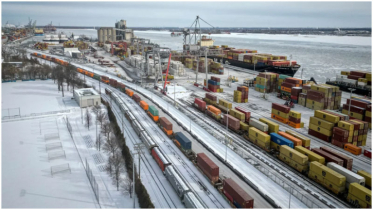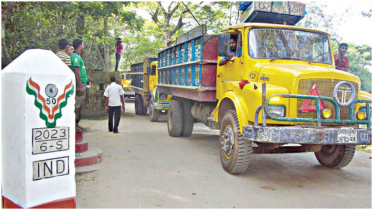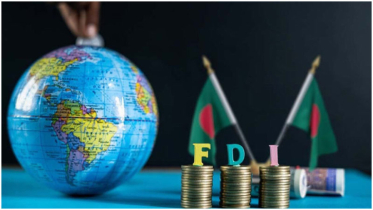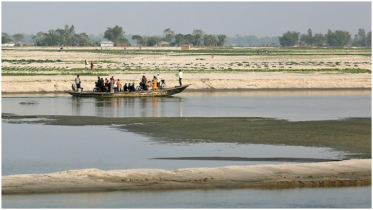How South Asia is blowing against the wind of regional cooperation
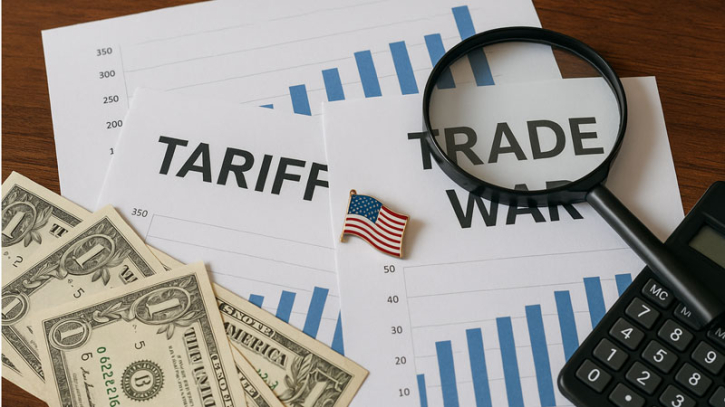
No other region has been hit as hard as Asia by American President Donald Trump's tariff policies targeting countries having a trade surplus with the US. The overall outlook of Asia does not seem bright after the trade war triggered by what Trump termed "reciprocal tariffs". Though paused for 90 days, a baseline 10% remains in force while China faces up to 145% duties prompting it to impose retaliatory steps.
The Asian Development Bank (ADB) has lowered its growth forecast for Asia further. The multilateral institution said the tariff issues will shave growth in the region by a third of a percentage point in 2025 and a full percentage point in 2026.
What are the immediate steps needed to weather the storm?
All multilateral institutions such as the World Bank, IMF and ADB have been calling Asian leaders to prioritise regional cooperation and intra-region trades to navigate economic turbulence and achieve sustainable growth.
The call fell flat for South Asia, but not for the rest of Asia.
Leaders of ASEAN (Association of Southeast Asian Nations), a block of 10 countries of Southeast Asia, are already in action.
In the first week of April, the ministers of the bloc at a meeting in Malaysia agreed to establish an ASEAN Geo-economics Task Force to discuss and formulate "a coherent forward-looking regional policy response to emerging economic and geopolitical challenges".
The 46th ASEAN Summit, scheduled for May 26, will convene leaders from all ASEAN member states — Indonesia, Malaysia, Philippines, Singapore, Thailand, Brunei Darussalam, Vietnam, Lao PDR, Myanmar, and Cambodia. The next day, they will hold talks with their counterparts from the Gulf Cooperation Council (GCC) to boost regional cooperation.
The summit would bring ASEAN closer to six Gulf nations — Bahrain, Oman, Kuwait, Qatar, the United Arab Emirates, and Saudi Arabia.
China has also been invited to attend, with Chinese Premier Li Qiang expected to visit Malaysia in conjunction with the summit.
"God willing, by the end of next month, Malaysia will mark another historic milestone by hosting the Asean-GCC summit," said Malaysian Prime Minister Datuk Seri Anwar Ibrahim on 12 April.
Malaysian Foreign Minister Mohammad Hasan, in mid-March, also announced that in October, ASEAN nations will engage with their 10 dialogue partners, including China, South Korea, Japan, Australia, and the US.
Emerging economies in Asia are moving in the direction of enhanced cooperation. But South Asia is blowing against the wind at the time of crisis.
The World Bank in its latest update on South Asian economies said while the sub-continent continues to grow faster than any other region, its growth prospects are dimming.
Growth outcomes in 2024 were disappointing and the outlook for 2025 has been downgraded for most countries in the region.
"After an unexpectedly weak outturn of 6% in 2024, growth in South Asia is expected to soften further to 5.8% in 2025 — 0.4 percentage points below October forecasts — before ticking up to 6.1% in 2026," it said.
This outlook, the World Bank said, is subject to heightened risks, including from a highly uncertain global landscape, combined with domestic vulnerabilities including constrained fiscal space.
After a decade of shocks, South Asian economies' ability to cushion new shocks is limited, it warns.
"Tackling some of its greatest inefficiencies and vulnerabilities could help South Asia navigate this unusually uncertain outlook. These include poor tax collection, unproductive agricultural sectors, households and firms that lack mobility and access to finance to mitigate climate shocks, and a growing labour force with insufficient jobs," said the World Bank.
The global lender has been urging South Asia to prioritise regional cooperation to navigate economic turbulence.
But South Asian leaders seem to be ignoring the writing on the wall. The region is now under the shadow of an escalation of India and Pakistan tensions after a deadly Kashmir attack which claimed 26 lives. Escalation of the armed conflict will jeopardise intra-regional trade again in times of global economic turbulence.
The World Bank has earlier recognised the potential and progress of SAARC (South Asian Association for Regional Cooperation) in areas like regional integration, trade and climate resilience.
The reality portrays nothing but a gloomy picture.
The last time South Asian leaders joined together in a video conference was more than five years ago after the Covid-19 pandemic broke out worldwide.
In response to an offer by India's Prime Minister Narendra Modi, SAARC leaders joined the video conference on 15 March 2020 and pledged to unite and fight together against the deadly virus to keep the people in the region safe.
The last SAARC summit was held in Kathmandu, Nepal, in 2014, more than 10 years ago.
The 19th summit was scheduled to be held in Pakistan in November 2016, but got cancelled after an attack on an Indian army camp in Kashmir, killing 18 soldiers.
According to the charter, SAARC is supposed to hold its summit annually bringing together heads of state to discuss in person how to cooperate more in trade and development.
The 39-year old bloc, in fact, has remained as a dysfunctional body for long due to mainly growing enmity between India and Pakistan.
The bilateral relation among SAARC countries is also not healthy enough to revive the bloc any time soon, though Bangladesh interim government head Muhammad Yunus has moved for its revival as he believes resuscitating the SAARC spirit can solve many regional problems.
After the Kashmir attack, India and Pakistan retaliated by downgrading their relations, suspending bilateral trade and landmark treaties such as Indus Waters and Simla agreements.
The relation between Bangladesh and India has reached its lowest ebb after the fall of the India-backed Sheikh Hasina regime.
After the political changeover in Bangladesh, Dhaka and Islamabad moved to mend their ties. But the Kashmir attack put a break on the move.
Bangladesh's move, however, angered India that scrapped the transshipment facility for Bangladeshi exporters. Even a ruling BJP MP recently demanded that India should stop water flow to Bangladesh by not renewing the Ganges water sharing treaty signed in 1996 for 25 years.
India, the major player in the region, does not have good ties with other South Asian countries such as Sri Lanka, Nepal and Maldives either due to what experts allege is its interference in the internal affairs of neighbours.
The other regional bloc BIMSTEC was intended to integrate seven South Asian and Southeast Asian nations — Bangladesh, Bhutan, India, Myanmar, Nepal, Sri Lanka, and Thailand. It was established in 1997 following Indian efforts to shift focus away from SAARC to sideline Pakistan. But it could not make much of a splash.
The only positive thing is it held its latest summit in early April where top leaders pledged economic integration amid global economic turbulence.
Intraregional trade accounts for barely 5% of South Asia's total trade, compared to the ASEAN region where intra-regional trade makes up 25%, according to the World Bank. South Asia is home to a quarter of the world's population. Despite a significant poverty decline in recent years, the region still has 7.6% of its population living in extreme poverty.
When the rest of Asia is making moves for regional cooperation to weather the US tariff war, the South Asian region not only remains the world's most disintegrated area, but also faces a dangerous moment after a deadly militant attack in Kashmir ramped up tensions between two nuclear armed neighbours — India and Pakistan — having a bitter history of conflicts.
Source: The Business Standard.
.png)

